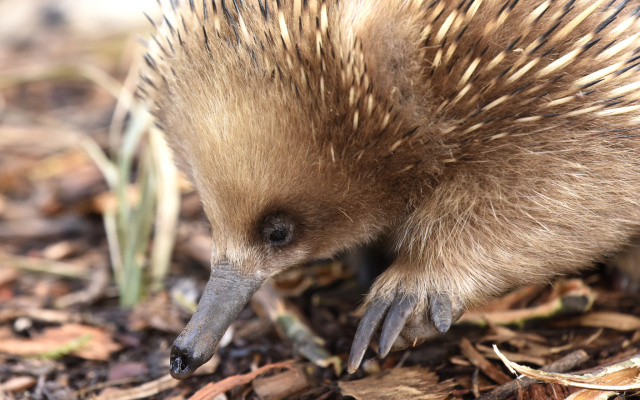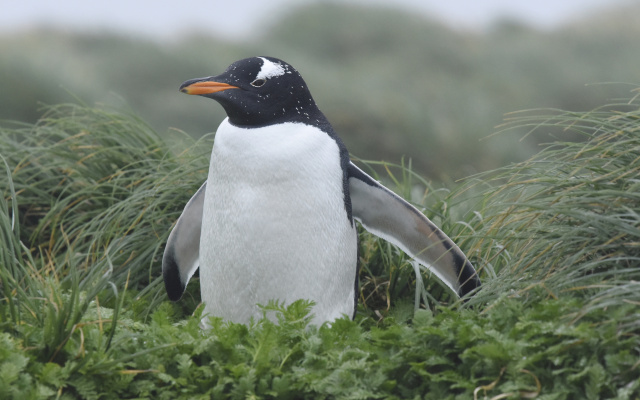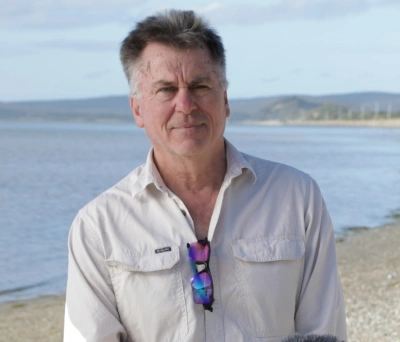A lifelong love for wildlife

Some of my (undergraduate science degree) lecturers were very good ecologists and they had the capacity to teach ecology or wildlife studies in a way that lit that spark of interest for a focus on wildlife. This was the late 1970s – the same time as the first television series of Life on Earth, with David Attenborough. To see wildlife as the BBC had captured it for us, that TV series really was a seismic shift in wildlife cinematography.
I think it was that combination – the perfect timing of the very good lecturers and the passion they had for wildlife, and the stuff on TV – that’s what planted the seed.
I wanted to do everything and learn everything I possibly could, but as I went through my undergraduate degree, my focus on wildlife became more concentrated. One of my lecturers, Eric Guiler, was on the Macquarie Island Advisory Committee. In those days it was like a research panel that oversaw the research on Macquarie Island. He had been the previous summer and gave a slideshow about his visit – and that for me was the final piece in the jigsaw puzzle.

I said, I’d really like to get to Macquarie Island for my Honours degree. I was coming up to finishing my study and so I approached Eric about how to get there. In those days the Antarctic Division was still in Melbourne. So my first trip to Macquarie Island was in 1980 on the Nella Dan. I spent 10 days on Macquarie Island and I worked myself to the ground to make sure I had enough information for my Honours project.
The Nella Dan anchored offshore and you climbed down the side of the boat into a light, amphibious resupply craft, like a duck. You have to step off one onto the other at just the right time. You go ashore and they park the vehicle on the beach and you just step over. I jumped off because I was so enthusiastic! And what I thought was a big rock was a big elephant seal. It reared up – it was a four or five metre animal expressing its displeasure.
That was wildlife in its natural environment – where it belonged, doing what it had to do.
The more experiences like that I had working with penguins, working with seals in the Antarctic as well later – it just cemented that focus for my life, in terms of working with wildlife.


Dr Eric Woehler

Some of my (undergraduate science degree) lecturers were very good ecologists and they had the capacity to teach ecology or wildlife studies in a way that lit that spark of interest for a focus on wildlife. This was the late 1970s – the same time as the first television series of Life on Earth, with David Attenborough. To see wildlife as the BBC had captured it for us, that TV series really was a seismic shift in wildlife cinematography.
I think it was that combination – the perfect timing of the very good lecturers and the passion they had for wildlife, and the stuff on TV – that’s what planted the seed.
I wanted to do everything and learn everything I possibly could, but as I went through my undergraduate degree, my focus on wildlife became more concentrated. One of my lecturers, Eric Guiler, was on the Macquarie Island Advisory Committee. In those days it was like a research panel that oversaw the research on Macquarie Island. He had been the previous summer and gave a slideshow about his visit – and that for me was the final piece in the jigsaw puzzle.

I said, I’d really like to get to Macquarie Island for my Honours degree. I was coming up to finishing my study and so I approached Eric about how to get there. In those days the Antarctic Division was still in Melbourne. So my first trip to Macquarie Island was in 1980 on the Nella Dan. I spent 10 days on Macquarie Island and I worked myself to the ground to make sure I had enough information for my Honours project.
The Nella Dan anchored offshore and you climbed down the side of the boat into a light, amphibious resupply craft, like a duck. You have to step off one onto the other at just the right time. You go ashore and they park the vehicle on the beach and you just step over. I jumped off because I was so enthusiastic! And what I thought was a big rock was a big elephant seal. It reared up – it was a four or five metre animal expressing its displeasure.
That was wildlife in its natural environment – where it belonged, doing what it had to do.
The more experiences like that I had working with penguins, working with seals in the Antarctic as well later – it just cemented that focus for my life, in terms of working with wildlife.

You might like...

Macquarie Island: a true wildlife hotspot

The amazing migration

The great Tasmanian bird count
The fairy tern: tiny beach nester
The fairy tern is a similar size to a hooded plover - so tiny, it would sit comfortably in the palm of your hand. They lay just two eggs, onto the beach sand. See these remarkable images from Tasmanian-based bird ecologist Dr Eric Woehler.
Newsletter
Sign up to keep in touch with articles, updates, events or news from Kuno, your platform for nature
